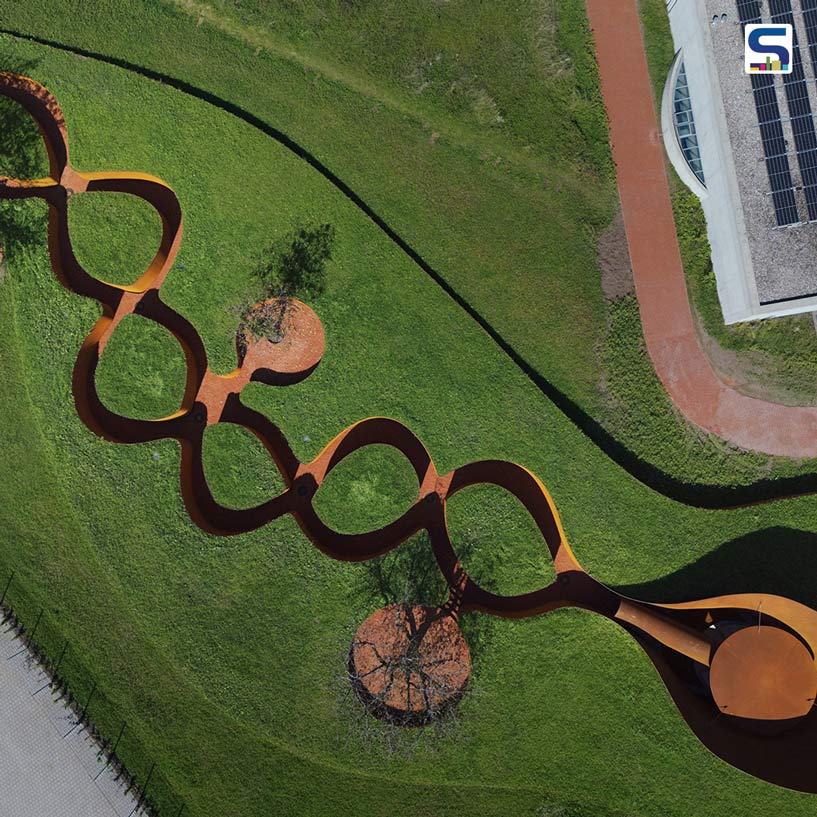
The final architectural work of the late Balkrishna Doshi, India’s first Pritzker Architecture Prize laureate, has reportedly reached completion at the Vitra Campus in Weil am Rhein, Germany. Named Doshi Retreat, this meditative structure marks a historic milestone as it is not only the last building conceived by the visionary architect but also his first and only project to be completed outside India. Realised in collaboration with his granddaughter Khushnu Panthaki Hoof and her partner Sonke Hoof of Studio Sangath, the retreat embodies Doshi’s lifelong pursuit of spirituality, simplicity and connection between nature, form and human experience. Through this project, SURFACES REPORTER (SR) showcases the lasting reminder of Doshi’s profound belief that architecture is not just building but it’s about awakening the human spirit.
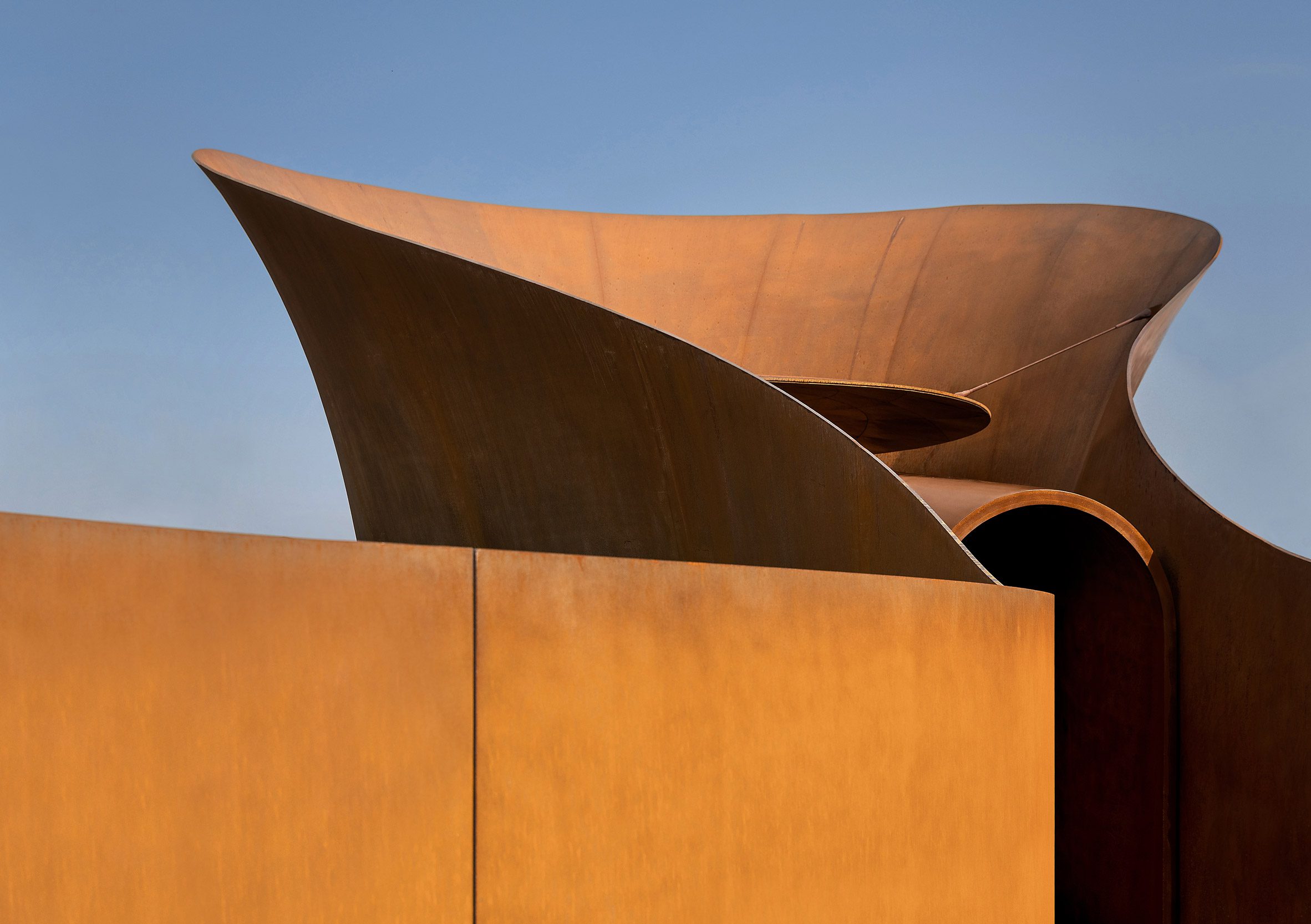
An Architectural Wisdom
Set on a quiet plot adjacent to Tadao Ando’s Conference Pavilion, the Doshi Retreat emerges as a snake-like form crafted from weathered steel, gracefully blending into the landscape of Vitra’s iconic architectural ensemble. Unlike the more public and striking buildings on the campus such as Zaha Hadid’s Vitra Fire Station, Frank Gehry’s Vitra Design Museum or Herzog & de Meuron’s VitraHaus, Doshi’s creation is introspective and almost hidden, intended as a space for solitude, reflection and spiritual retreat.
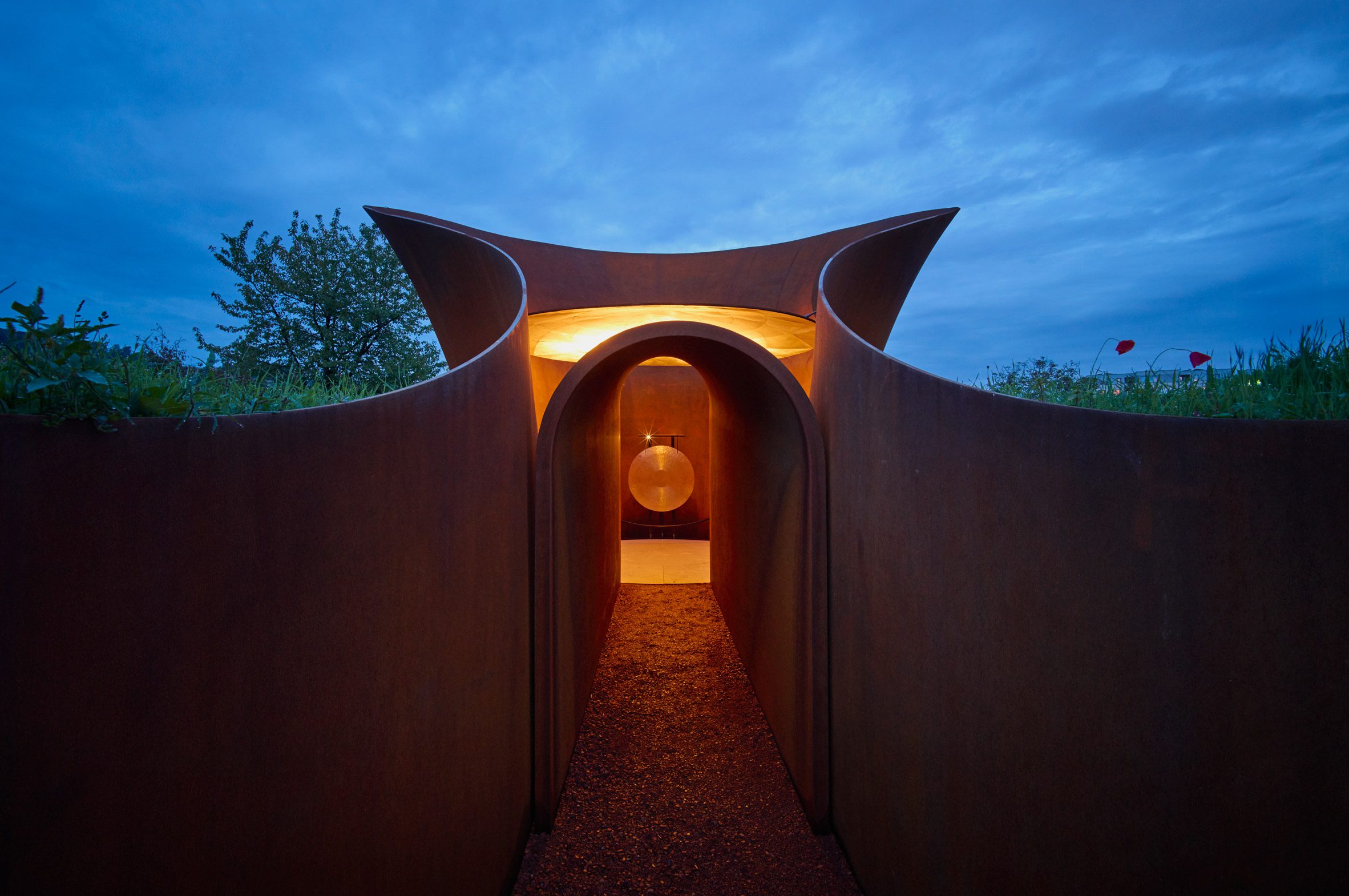
By locating it slightly apart from the main campus, near Ando’s conference pavilion, Doshi reinforced the idea of intentional arrival. Visitors must make an effort to reach it, walking away from the bustling campus to clear their minds before entering a space of introspection. The origin of the project is deeply personal and symbolic. Doshi envisioned the retreat as a journey rather than a destination where a space must be arrived at through conscious movement. Its winding pathways and subterranean passages evoke a meditative rhythm, guiding visitors slowly inward. The design evolved from a sketch inspired by one of Doshi’s dreams in which two cobras intertwined, more like a motif that became the conceptual and spatial foundation of the retreat. These two serpentine pathways interweave and descend below ground level, eventually leading to a small pavilion that serves as a contemplation chamber.
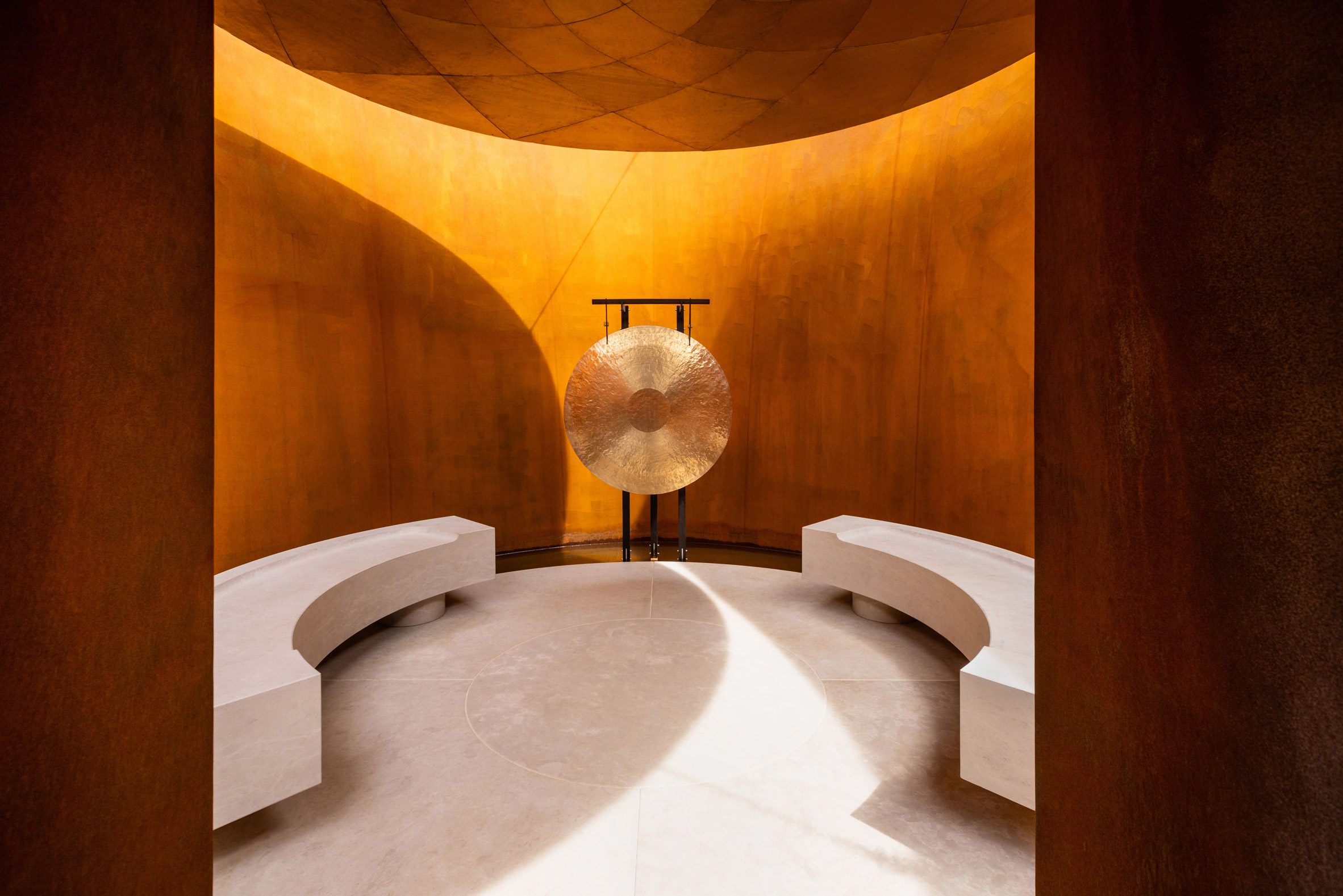
According to Khushnu Panthaki Hoof, the project’s layered symbolism resonated deeply with Doshi. The intertwined paths reminded him of his ancestral home and his dream of serpents, while also reflecting the ancient Sanskrit concept of Kundalini, a primal energy imagined as a coiled serpent at the base of the spine. As visitors walk the meandering route, they metaphorically awaken this energy through movement and mindfulness, reaching a space of stillness at the pavilion.
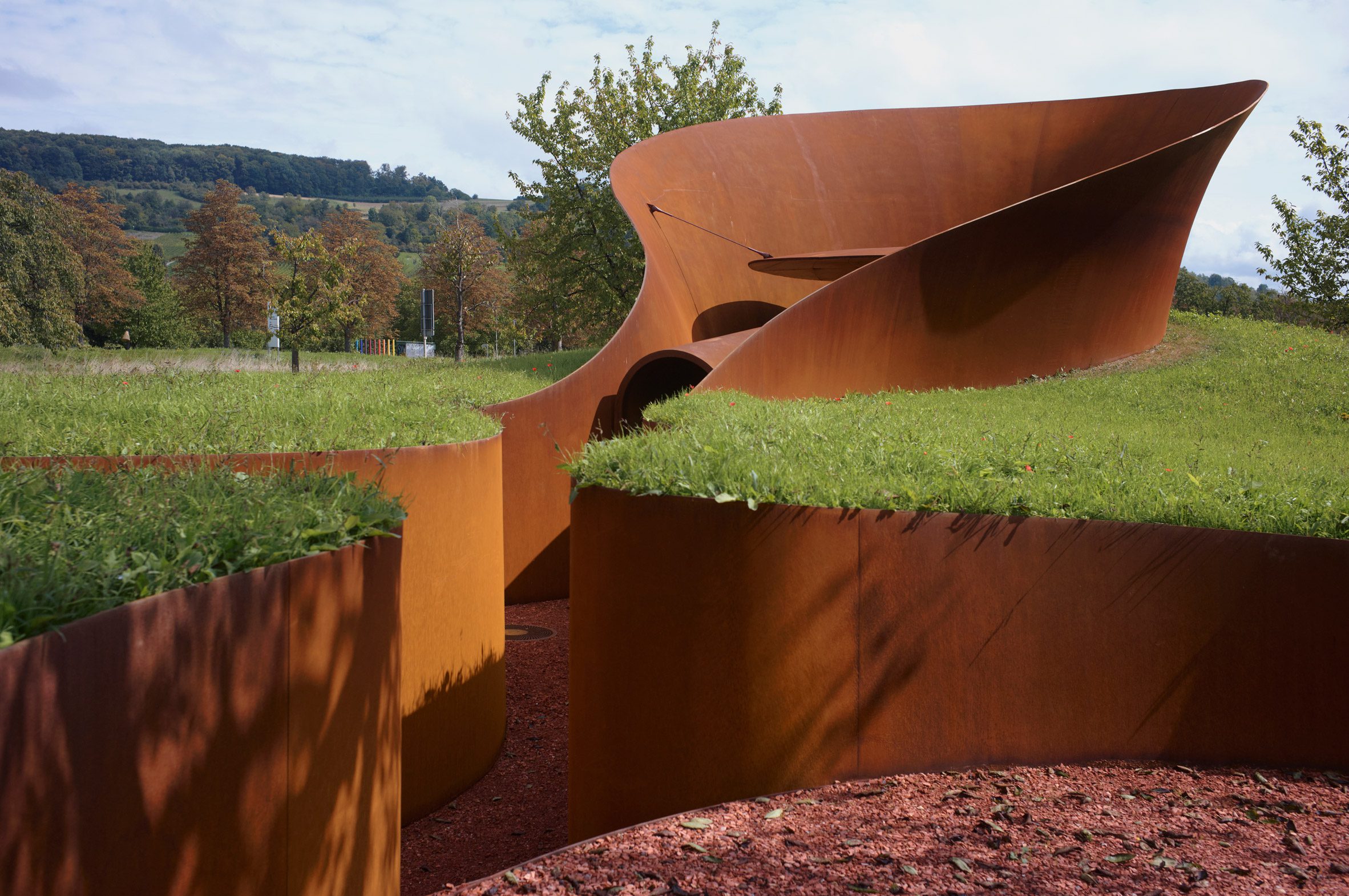
A Final Masterpiece
The weathered steel used throughout the structure, donated by ArcelorMittal and composed largely of recycled scrap, was chosen for both its sustainability and its living, evolving surface. Reportedly, the patina of the steel changes with weather and time, making the architecture feel alive. Its warm, earthen tones harmonise with the surrounding landscape.
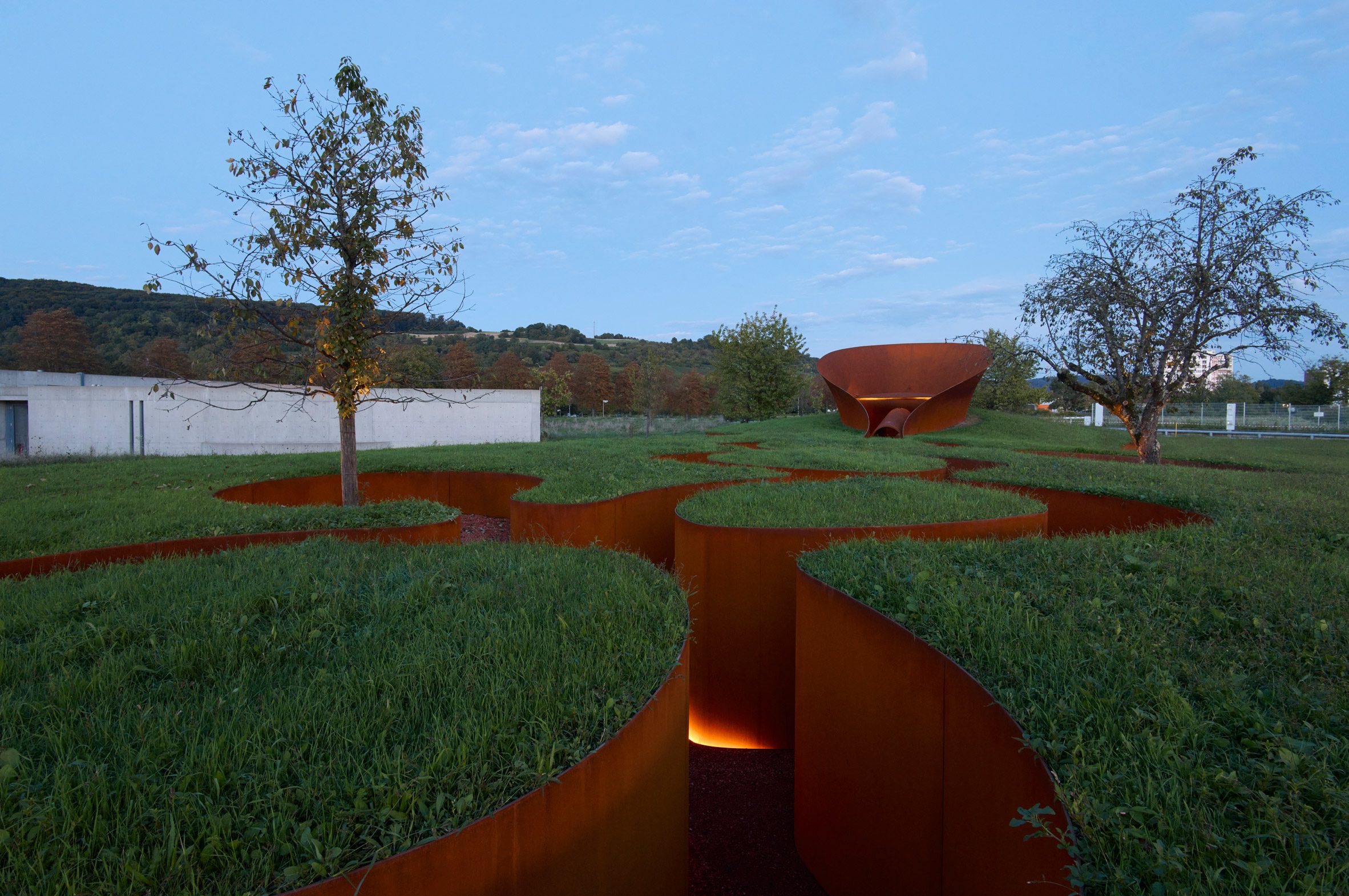
Visitors enter through a short tunnel to discover a circular chamber anchored by a large gong and two semicircular stone benches, partially sheltered by a hand-hammered brass mandala crafted by artisans in India. A narrow gap encircling the mandala allows rainwater to fall into a circular basin below, introducing the soothing sound of water as a meditative element. The interplay of sound, material and light deepens the contemplative atmosphere, while subtle landscaping along the pathways with raised areas around trees and an audio system playing gongs and flute music reinforces the retreat’s sensory design.
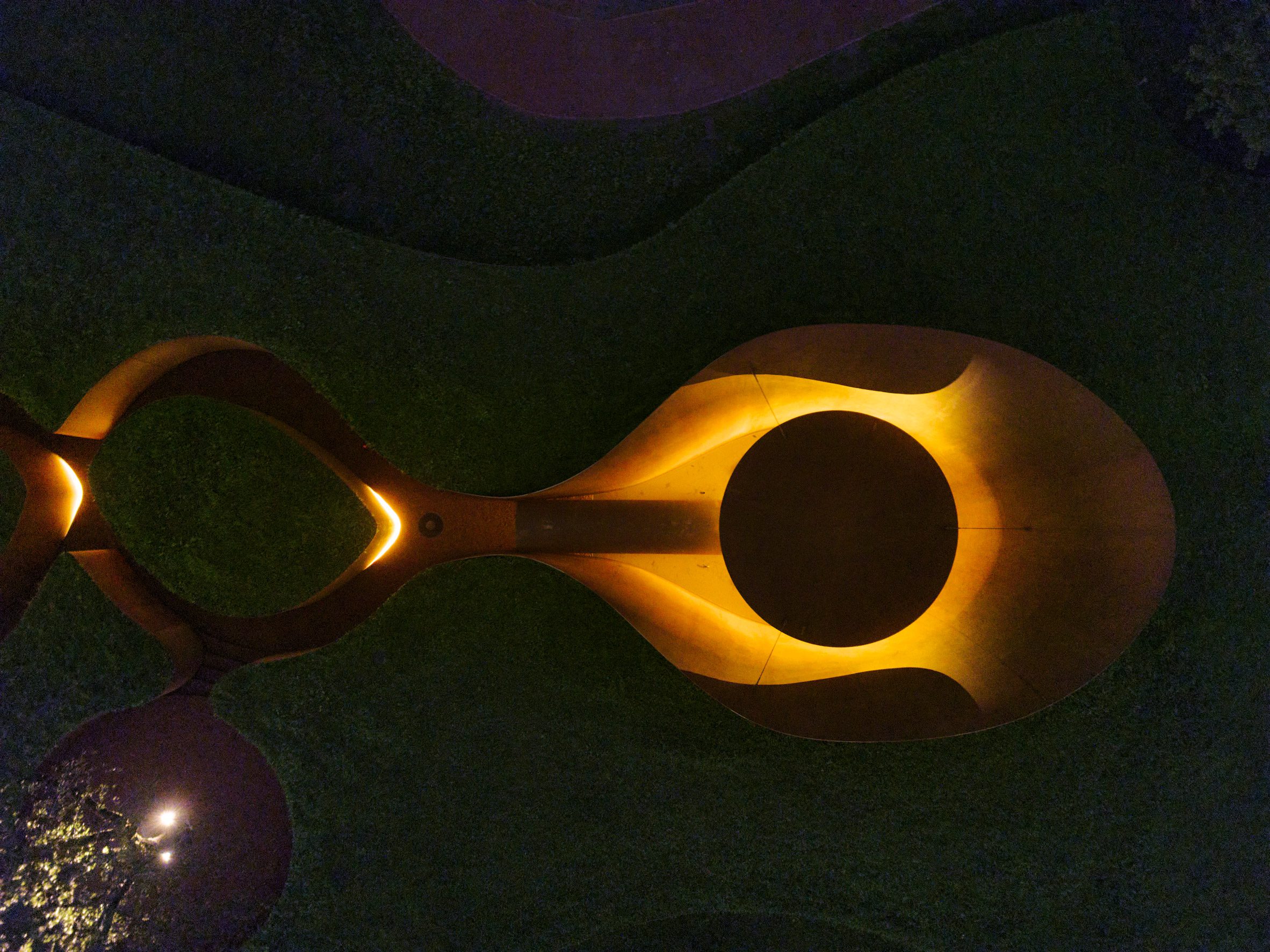
The project was reportedly initiated in 2020, when Rolf Fehlbaum, Chairman Emeritus of Vitra and the visionary behind the campus’s architectural legacy, approached Doshi with the idea. Fehlbaum, inspired by a small shrine he had visited at the Modhera Sun Temple in India, wished to create a space that evoked the same sense of spiritual stillness and humility.
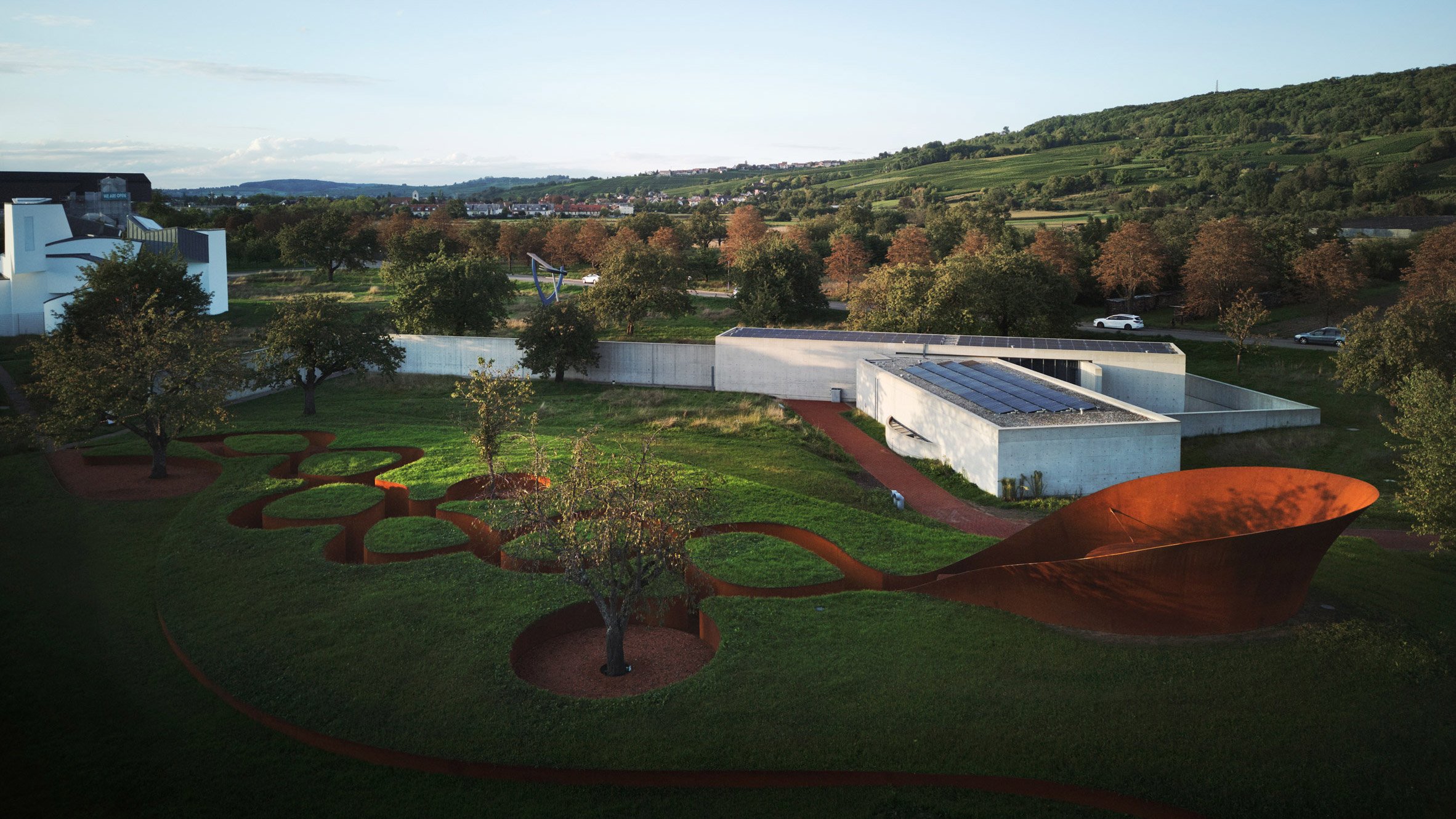
Image credit: Julien Lanoo, Daisuke Hirabayashi